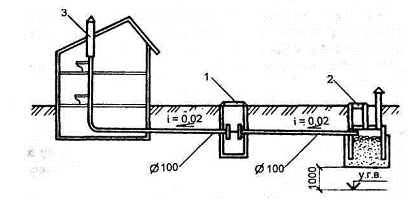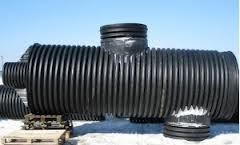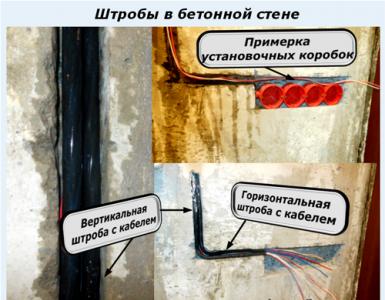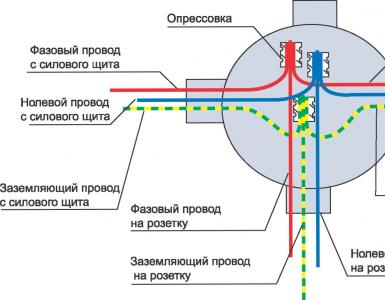How to make a sewer well with your own hands: calculation and installation
It is not often necessary to make a sewer well with your own hands. As a rule, such a serious event will take place during the construction of a new house. Or, perhaps you have bought yourself a ready-made house or summer cottage.
The first moment of happiness has passed and now you need to think about how to make your purchase more comfortable and adapted for a normal life. It is very important to create comfort that it has a water supply and sewerage system.
It is not for nothing that when they write in advertisements for the sale of "a house with all the amenities" or "a house without amenities", they imply the presence or absence of the aforementioned systems.
In the absence of water supply or internal sewerage in the house, you will have to work seriously.
The first step is to decide how to make a sewer well.
Of course, you can hire specialists who will perform all the necessary calculations and work. But this is a rather expensive pleasure, so many decide to make a sewer well for a summer residence or for a country house with their own hands.

A bit of theory
Sewer networks are divided into:
- outdoor;
- internal.
The internal sewerage system is the one inside the house, respectively, the external system runs outside the house.
When designing and installing a sewerage system, one of the main problems will be determining the place where the wastewater will flow. It is best to connect to a central sewer system.
In the same case, if the city sewage pipes do not pass near your house or plot, you just have to equip the sewer well yourself.
First, you need to decide on the place where the sewer pipe exits from the basement or basement of the house (for this you already need to know where all the plumbing will be located in the house) in order to know which side you can arrange a sewer well.
Your attention!
Where to locate a sewer well for a summer residence or a private house?

The scheme of a sewer well must be drawn up, taking into account all these nuances, if you want to have a normally working sewer system in the house and clean air on the site.
What questions arise when you do it yourself?
- What size to make a sewer well?
If we are talking about a simple cesspool, then the larger the better - less often you will have to call a machine to pump out sewage.
There is a general formula that determines the volume of a sewer well. But all this is conditional and depends on the intensity of water use, and hence the sewerage system.
For example: for a family of 3-4 people living in the country, 3-4 reinforced concrete rings are not always required.
- To make the well sealed or leave the possibility of sewage entering the ground?
There is no definite answer to this question - whether it is hermetically sealed or not, it all depends on a particular case.
According to the rules and regulations, a sewer well must be built sealed, that is, the bottom and walls must be tightly concreted. But this entails additional material costs, since how much water is poured into the sewer, so much will have to be taken out by a sewer truck.
Therefore, wells with a filtering bottom are more common in our summer cottages, through which liquid fractions of sewage seep into the soil surrounding the well.
If you decide to save on wastewater disposal by making the sewer well leaky, then you will have to take into account some nuances during construction, otherwise a bad-smelling swamp will soon form around the well, and it will be impossible to drink water from nearby aquifers.
The main requirement, as mentioned above, is that the distance between the sewer and drinking wells must be at least 30 meters. The depth of the sewer well will depend on the structure of the soil, you need to get to a well-filtering soil (sand).
The bottom of such a sewer well must be covered with crushed stone with a height of 30 to 40 cm.If your site has a high level of groundwater (1.5 miles higher), you cannot use this type of well, since fecal water will mix with groundwater and this can lead to poisoning or other unpleasant consequences.
- What to make a sewer well from?
Sewer wells are:

- Brick;
- Reinforced concrete;
- Wooden;
- Plastic assembly.
In practice, a variety of materials are used for the construction of sewer wells. You can lay out the walls of the well with red or silicate bricks, you can revet the walls of the sewer well with wooden boards soaked in a special solution against decay.
Often, completely unconventional materials are also used, for example, wells are often found, the walls of which are lined with cut tractor tires.
But still, most often for the construction of sewer wells, reinforced concrete rings are used due to the simplicity of the design and ease of installation.
The easiest to install plastic sewer wells.
In fact, to install them, you only need to dig a hole of the required size, lay out the foundation, install a well and connect a drain pipe. But so far, for the average consumer, the cost of such wells is still quite high, although this type of sewer wells is the most environmentally friendly and pays for itself over time.
The period for the removal of sewage is significantly increased. On average, it is necessary to remove sewage from plastic wells once a year.
How to carry out a sewage system with reinforced concrete wells?

It is clear that the sewer well will consist of several reinforced concrete rings. The scheme of a sewer well is simple - it is several rings, standing on top of each other and fastened together.
Installation diagram:
- Install the first ring in the designated area for the sewer well.
- Now you need to dig the hole itself inside and along the edge of the ring. From time to time, you need to plant the ring down, this will require at least two people for the ring to settle without distortions. Yes, it is most convenient if one person will dig and the other will pull out the soil.
- When the upper edge of the first ring drops to ground level, we place the second one on top of the first ring exactly, and the “locks” of the rings must be placed one above the other.
- We continue in the same spirit until all the rings fall below ground level. Carefully measure at what depth the drainage pipe fits to the well. Please note that the pipe must enter the sewer well at a depth of at least 0.6 meters from the surface, otherwise it will freeze in winter.
- Do not forget that the hole in the upper ring for the pipe entry must be punched before the ring goes underground.
- Above the rings, we make a brickwork formwork (this is necessary to insulate the sewer well).
- We install a reinforced concrete slab with a hatch on the formwork.
- The sewer well must be waterproofed from above. This is necessary so that melt water or precipitation does not fall into the sewer well.
The scheme of sewer wells such as septic tanks is more complex, but such a well can also be made with your own hands. In fact, a septic tank is the simplest treatment facility for treating small volumes of wastewater.
Simplified one consists of two (or more) adjacent wells connected by an overflow pipe.
In this case, the first container is a chamber with a sealed bottom and the initial settling of the sewage takes place in it. As it fills, the lighter liquid fractions through the overflow pipe enter the second chamber with a filter base and already almost purified wastewater goes into the ground.
Like ordinary sewer wells, septic tanks are also available ready-made in the form of two connected plastic containers. In this case, you just have to prepare the appropriate pit and connect the sewer pipe coming from the house.
Using a septic tank instead of a conventional well has several advantages:
- a much higher degree of purification and less contamination of the soil around the well;
- the practical absence of unpleasant odors near the wells;
- the time between calls to the sewer truck increases;
- A septic tank is the most environmentally friendly option for an external sewage system that you can build yourself.













